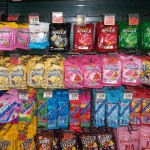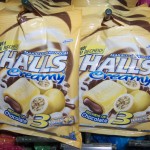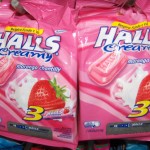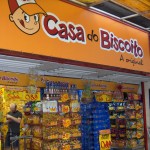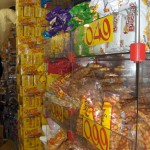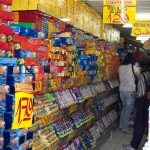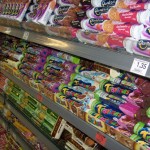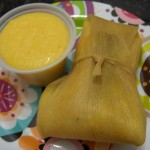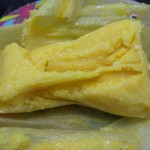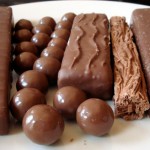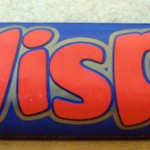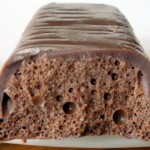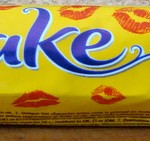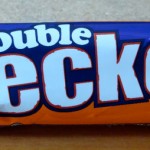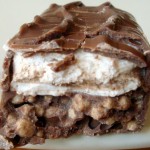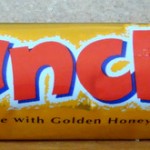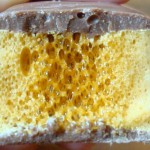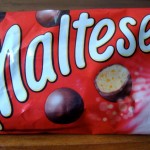biscuits
Brazil: The Ugly (or the kinda weird)
Brazil’s dessert landscape has a few more curiosities:
1. Halls (yes, the company that makes your cough drops) are candy. This realization dawned on me after seeing everyone from street vendors to grocery stores to juice bars hawking them alongside other prepackaged sweets. At first I thought, “Wow, Brazilians must have 24/7 sore throats or something– ick.” But then I peered closely and read some of the flavor names, such as “Halls Creamy: Tropical Passion Fruit with Chocolate Center.” It’s so weird because they still sell the menthol-eucalyptus-cherry-lyptus-honey-horror flavors right alongside the sweet ones, but they just have a higher “Halls Power” rating of, like, 5 out of 5 for “extra forte-lyptus,” rather than a 1 out of 5 for “Halls Creamy: Strawberry Cream.” Do you think Brazilian kids beg for them when they’re <cough> sick like my brothers and I used to beg for completely ineffective cherry Ludens?
2. Just like the Brits, Brazilians just loooove biscuits. I would say that this love is similar to Americans and their cookies, but it’s different: there are several chain stores that are literally devoted to biscuits, Casa do Biscoito being one of them. Inside these yellow-hued wonderlands, you’ll find enormous, heaping towers of biscuits in every kind of packaging imaginable, from rolls to boxes to sacks. It’s a feast for the eyes, if not necessary the palate. Are wafer-based items included? You betcha. What would the rest of the world do without their wafers?  Despite looking down my nose at them as a young dessertatarian, because I thought they were too cheap and light to be proper sweets, I have now come to appreciate their subtle charms and pleasant crunch. The wafers I tried from the Casa, however, sent my development back about a year, as I tried to go for the chocolate flavor, and, as already discussed in a previous post, found them to be totally unsatisfying. I also had to close my eyes during each bite for fear that some of the wafer shards would come flying up and blind me. On the other hand, they were so dry that the billions of crumbs that ended up in my lap just blew right off when I got up. I hope I didn’t blind anyone around me, though.
3. Do you like vaguely sweet corn pudding? Because the Brazilians do. It’s a typical street vendor food that you might think is the aforementioned quindim, but it’s more yellow-yellow what with the corn, rather than eggy golden-yellow. It’s called curau and comes in a dry-ish form wrapped in a corn husk, tamale-style, or in a cup for the wetter version.  They both taste… fine… just fine.
British Sweeties: Candy Bars and Biscuits
Since Kraft recently bought Cadbury, I’m extremely worried that the Flake bar will start tasting like American cheese, so I decided to stock up while I was in Scotland a month ago. It was ’bout time for a tasting:
Wispa & Flake bars are basically textured Cadbury chocolate. It just goes to show what a difference texture makes, because I’m not a huge fan of plain Cadbury chocolate, which they sell in the form of the Dairy Milk bar. I think it’s too rich, milky, and it has a tinge of raisin flavor.  Wispas & Flakes solve this problem by making the chocolate lighter.
Wispas are full of tiny little air bubbles, which somehow produce a light and silky chocolate taste– almost like a meltaway. I adore them, but they are pretty hard to get in the U.S., so my aunt kindly brings me yearly stocks of them, which I gobble up faster than I care to admit. The only person I’ve ever shared them with is my chocolate-crazy niece, Maddy, who eats them in quiet reverence at the tender age of seven.  Well done, little one! For some insane reason, Cadbury stopped making the Wispa in 2003, but a public outcry caused them to come back “for a limited time” in 2007. Then after more squirming and rage from the public (why must they play with our minds with this whole “limited time” thing?!?!?!), the world gave a great sigh of relief when the Wispa was brought back permanently in 2008.
Flakes are made of bark-like ribbons.  Buying an intact specimen in the store, far less keeping that way across the Atlantic, is almost impossible, but somehow the one in the photo made it, that is until I ate it. It must be pointed out, by the way, that a soft serve ice cream cone in Britain without a Flake sticking out of it is like a kitty without fur: naked and sad.
Double-Decker bars get their name from the iconic British double-decker buses. They have a layer of crunchy, chocolatey biscuit, and a layer of nougat.  I do get that hint of raisin flavor somehow, but I like it here.
The Crunchie claims to be a chocolate bar filled with a honeycomb center. Since chewing on wax is out of the question, the next best thing is chewing on something called a honeycomb, but is actually a super crunchy, tooth-achingly sweet, golden candy. Thank goodness for the nice amount of chocolate coating to provide some balance.
While doing a scotch of research for this post, I discovered that Kraft also owns: Lu (makers of the wonderful Petit Écolier chocolate biscuits), Côte D’or (the Cadbury’s of Belgium), Marabou (the Cadbury’s of Sweden), Milka (the Hershey’s of much of Europe), and Toblerone (the triangular-shaped Swiss chocolate bar with crunchy bits of nougat). Kraft’s all like, “Bring it, Nestlé.”
I also would be remiss if I didn’t write a quick word about Britain’s love of biscuits, which are often a chocolate & dry cookie combo and can be eaten at almost any time of day, but most often make an appearance at tea times. Digestive Biscuits, a deceptively healthy sounding example, are my favorite. They’re simply delicious. You can get them without chocolate, but why would you? They’re like wheat cookies or something– still sweet, but also a bit worthy, as my mother says.
